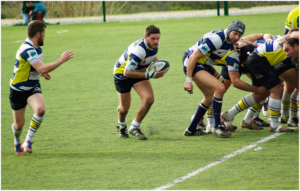Why Everyone on the Rugby Field Needs to Warm Up

Warming up is a vital part of your rugby routine. As well as preparing the body for more strenuous exercise, warm-up exercises are believed to help prevent serious injury. Warm-ups stretch your muscles, warming them up to avoid physical strain. Warming up for a game will help you reach your full potential on the pitch.

Image Credit
Warm-up Exercises
It’s always a good idea to warm up with exercises that are specific to your sport. Most warm-ups include cardiovascular exercises, stretching and drills. Rugby drills are a perfect warm-up for everyone on the rugby field. Be sure to increase your warm-up time in colder weather. Click here for lots of informative tips on activity guidelines: https://www.nhs.uk/live-well/exercise/.
Warm-up Drills
Rugby drills are an excellent way to prepare your body for a match. They will help increase your heart rate, breathing and blood flow at a steady pace. The very best work-out for your body is to gradually build up the intensity of the exercise, making warm-up drills the perfect choice.

Image Credit
Getting Started
Start off with a gentle jog, increasing the pace to a run. Make large circular arm movements to warm up your upper body muscles, followed by shoulder rolls. Move on to a set of Form Drills, such as high knees, hill flicks, sidesteps and lunges. Follow up with a basic handling drill such as simulated passing at different speeds and distances. These types of drills encourage movement at different speeds and allow blood flow to all areas of the body. For full descriptions on how to warm up using this type of drill exercise, check out https://www.sportplan.net/drills/rugby.
Mental Warm-ups
Don’t forget to prepare yourself mentally and get in the zone. Mental preparation prior to a game is a vital part of the warm-up process and is said to improve skills and techniques.
Cooling Down
Cooling down after exercise or sport is just as important as warming up and should be a gradual decrease in the body’s activity. Just as warm-ups increase your heart rate and breathing, cool-downs are designed to do the opposite, allowing your levels to gradually return to normal. Make sure you slowly decrease the pace of your activity at the end of your game. This will help you to avoid feeling light-headed or dizzy.



